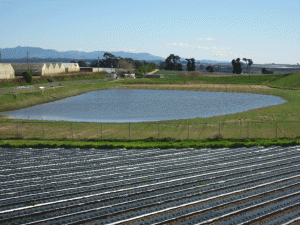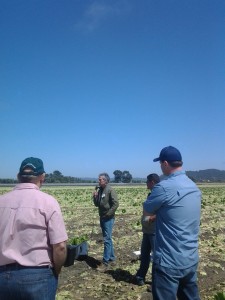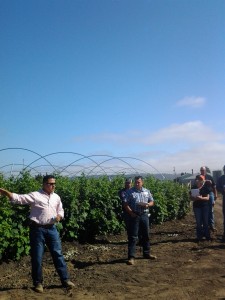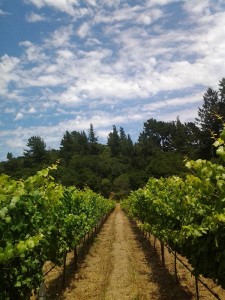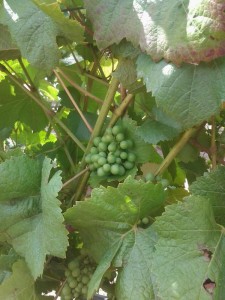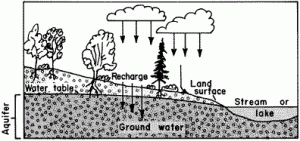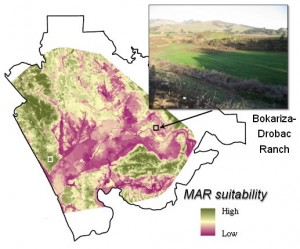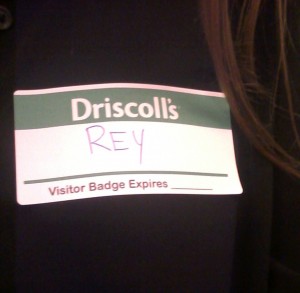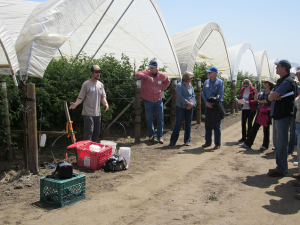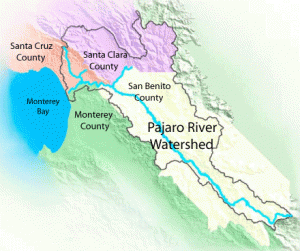Last week I had the opportunity to attend an ‘Organic Training for Agriculture Professionals’ workshop. This training was funded by Oregon Tilth, a nonprofit dedicated to supporting and advocating organic food and farming. The workshop’s objective was to help its 20 participants gain a better understanding of how to implement practice standards in organic systems and an increased ability to assist organic producers with the development of a conservation plan.
The first day we were in a classroom setting and learned about various different topics in relation to organic systems:
- Cover crops
- Nutrient management
- Pest management
- Crop rotation
- Conservation buffers
- Soil analysis
While I don’t mind a classroom setting, I learn more efficiently when I’m out on the field. The second day of the training we got to practice what we learned in the classroom on an actual farm. Javier’s farm was one of the most beautiful sites I’ve ever been to.
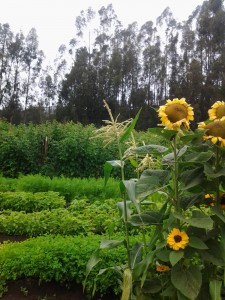
Organic farm in the Salinas Valley
Javier, an extremely cool organic farmer based in Salinas, primarily grows organic strawberries.
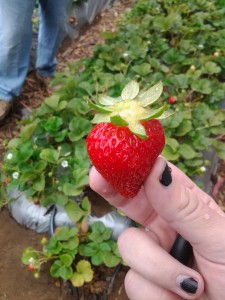
Organic strawberry
He also grows raspberries, cilantro, parsley, chard, and he has about 100 organic-egg-laying chickens! They like to hang out in a redwood tree which is just great/ hilarious and they get to live a happy, free-range life.
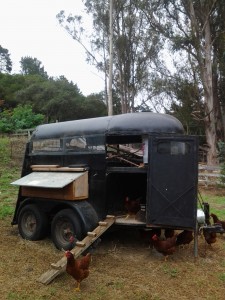
Happy chickens
We applied everything that we learned in the classroom the day prior and tested the soil quality on Javier’s farm. By doing this we were able to recommend the amount of nutrients (P, K, N) that he should be adding to his soil (whether he needed to increase or decrease quantities).
It’s challenging enough to be a farmer. After this training, I realized that it’s even more challenging to be an organic farmer. Not everyone is like Javier, who has all of his documents neatly organized “so it’s easier when the inspector comes.” There’s SO much more that goes along with the planting of a seed.
I’m learning to appreciate farmers on a whole new level – organic or not. After all, they grow all of the food that you and I eat every single day, and it’s NOT an easy job.






